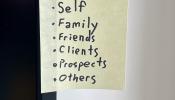Expedition Behavior in Remote Teams

As the novel Coronavirus (COVID-19) continues to keep people at home and teams working remotely, I’ve been thinking more about how to support teams to do their best work during these challenging times.
I’m a big fan of Woody Zuill the creator (or discoverer/enabler?) of Mob Programming and he recently tweeted that he’d recorded an episode of the “Mob Mentality Show” which I’d never heard of. A few clicks later, I was watching a recent episode about Remote Programming Etiquitte. Not only did the hosts, Chris and Austin, talk about astronaut Scott Kelly’s book Endurance: A Year in Space, a Lifetime of Discovery, they introduced me to the idea of Expedition Behavior (I’ll use the North American spelling since that’s where it started) espoused by the National Outdoor Leadership School (NOLS).
So many of these behaviours are relevant to high-performing teams and even more important for teams working remotely. Borrowing from this nice overview of Expedition Behavior in the wilderness, here’s my take on how these apply to high-performing teams in a professional context.
1. Support the group’s goals
Before setting out on any expedition (or project), it’s important to know what you want to get from it. Is it an exercise to learn something? Do you want a finished product? What does “finished” mean? Knowing why you’re embarking on something and how you’ll measure success is critical to ensuring you’re prepared, the team is fully engaged, and you know if you’re heading in the right direction. Is it time to refactor some code and solve some tech-debt? Or should we be building a new feature and winning over our customers? This is where a clear and simple goal-setting framework like OKRs becomes really useful. Once you know the team’s goals, a good team player consistently acts to realise those goals. This is where the weekly check-in really shines as it gives everyone in the group a chance to see how their actions are contributing to their collective success.
2. Take care of yourself
In difficult times, it’s even more important to look after yourself. This isn’t selfishness, it’s good planning and the only way to truly support your team (or spouse, or family, or friends). If you need to take a bit of time out, if you need to have a non-work chat with a colleague, if something isn’t clear, if you need to fix something that’s been bothering you, go for it. But, of course, communicate with the team. Let them support you, too.
3. Pitch In
On every expedition, there’s plenty of boring, mundane work to do (cleaning up, filtering water, etc.) Remember, great teams thrive on rigour and discipline; mediocre teams survive on heroics and sacrifice. Applying the “Boy Scout Rule” is one example of “Pitching in” and a key element of achieving a state of continuous improvement or “Kaizen”.
4. Help others but don’t do their work for them
This is another area where pairing and mobbing really shine. When folks are stuck, lend a helping hand but do it in the spirit of teaching them to do it themselves, not making them dependent on you or frustrated by their current lack of skill or capacity in a particular area.
5. Moderate potentially annoying behaviours
It’s important to leave room for individuality, expression, and personality in the group but remember good teams expect to work well together for a long period. And usually a long period filled with challenges and uncertainty. Whether through group retrospectives or individual Conversations, Feedback & Recognition (CFRs), it’s important that the team finds ways to identify and gently correct behaviour which is disruptive and destructive to the group dynamic and achieving their goals. Nonviolent Communication can be a terrific tool here.
6. Admit mistakes, correct them, and move on
Everyone makes mistakes, particularly in high-pressure time-sensitive group situations. It’s okay and it’s okay to acknowledge when you’ve goofed, ask for forgiveness, and then adjust your behaviour and move on. Did you forget to follow protocol? Did we skip a couple of unit tests that caused an issue later or send an email that might be read the wrong way? It happens. Fess up, fix it, and move forward. Most importantly, remember to support your colleagues when they model this behaviour and show them that it’s okay and your team is a safe place to experiment, fail now and then, and improve.
7. Support Everyone’s Growth
Related to #4 above, make learning a priority. Rotate as many roles as possible from running agile ceremonies, to doing analysis, development, testing, deploying, etc. so that everyone can improve. Dan North promotes the idea of “Never the expert” where the “expert” is on hand to help out, but the non-experts do the work and get the practice so they can develop their own expertise.
8. Be “cow-like”
Strong reactions, even when they feel “warranted”, increase stress and impair judgement. Whether it’s a system outage, human error, or responding to somebody else’s strong reaction, it’s important to keep cool and collected. Remember to stop, breathe, & think before you act. A calm response isn’t a negligent one. Staying composed and basing decisions on facts will help the team to make a solid plan and move forward with confidence. A blameless post-mortem (or Post Incident Review) is a great way to learn valuable lessons from whatever happens.
9. Relaxed awareness
In the wilderness, paying causal but continuous attention to subtle signs in the environment can, quite literally, make the difference between life and death. For technology teams, it’s equally important to understand what “normal” looks like and any changes. Treat the environment as a rich source of interesting data to read. Use this data to identify and solve the little problems before they become big ones and be ready for major changes when they come. Advanced real-time monitoring tools are great for this, but just as valuable are frequent conversations among the team to ask “how’s it going?”. Is our test-suite throwing a few false-positives? Did the last couple of builds take a little longer than usual? Interesting… let’s dig into that and see what’s going on.
10. Be funny
Despite my best efforts, I am not an especially funny person. But I appreciate the importance of keeping the mood light (except when it shouldn’t be). Silly hats, props, fun retrospective games and ice-breakers, and opening meetings with jokes or funny anecdotes are all good ways to break the tensions that arrive when a team is doing complex, difficult work and things aren’t going perfectly (which happens to every growing team sooner or later). Find and celebrate those little moments of joy and lightness whatever the situation.
Into the wild
Perhaps it’s the result of being mostly cooped up my London flat for the past 6 weeks but I’m seeing more and more parallels between software delivery teams and groups venturing out into the wilderness. Try the tips above and see if they help your teams to form deeper long lasting relationships, deliver better, and enjoy the journey!

